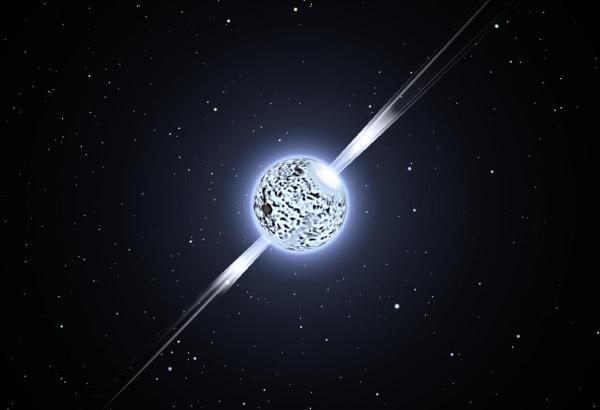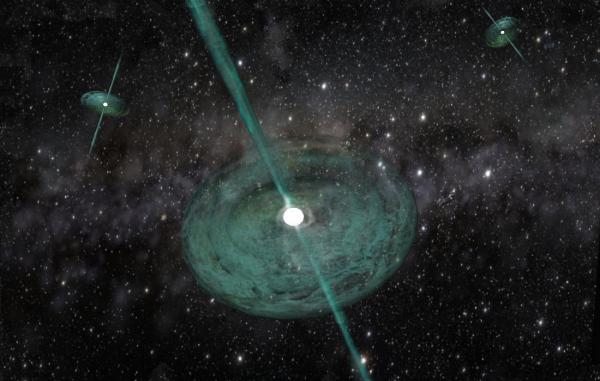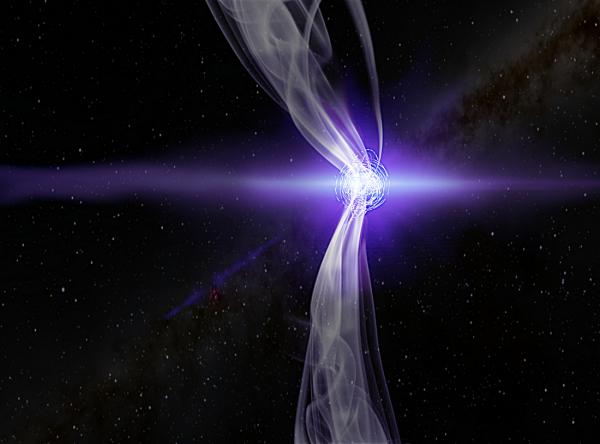BY LETTER
Neutron Star
 Image from Steve Bowers |
A very small dense star that is composed mostly of tightly-packed neutrons (neutronium).
This hard-to-see body, the remnant of a star after it has exploded as a supernova, has a thin atmosphere of superhot hydrogen plasma and a crust made up mainly of iron and other heavy nuclei. It has a diameter of about 5-16 km and a density of roughly 1015 gm/cm3. Beneath the crust lies a mantle of superfluid neutronium, which can become mixed with quark matter at the core.
Most neutron stars rotate rapidly, with periods ranging from a few seconds down to milliseconds. Highly energetic neutron stars emit rapid, regular pulses of electromagnetic radiation, and are known as pulsars; the most extreme examples of these objects are known as magnetars.
 Image from Steve Bowers | |
| KJEI-54-458945 is a neutron star that holds an exotic matter biosphere, including the intelligent species known as Hildemar's Knots | |
 Image from Steve Bowers | |
| Lethe - a Neuron Star | |
Related Articles
- Gamma Ray Bursters
- Geminga
- Hildemar's Knots and the Einstein's Revenge Cluster
- KJEI-54-458945
- Magnetar
- Muora
- Neuron Star, N Brain
- Neutron - Text by M. Alan Kazlev
Uncharged atomic nuclear particle. It has a mass slightly greater than a proton. In beta decay, a neutron decays into a proton, an electron, and an anti-neutrino. - Pulsar
Appears in Topics
Development Notes
Text by M. Alan Kazlev
Initially published on 09 December 2001.
Initially published on 09 December 2001.






